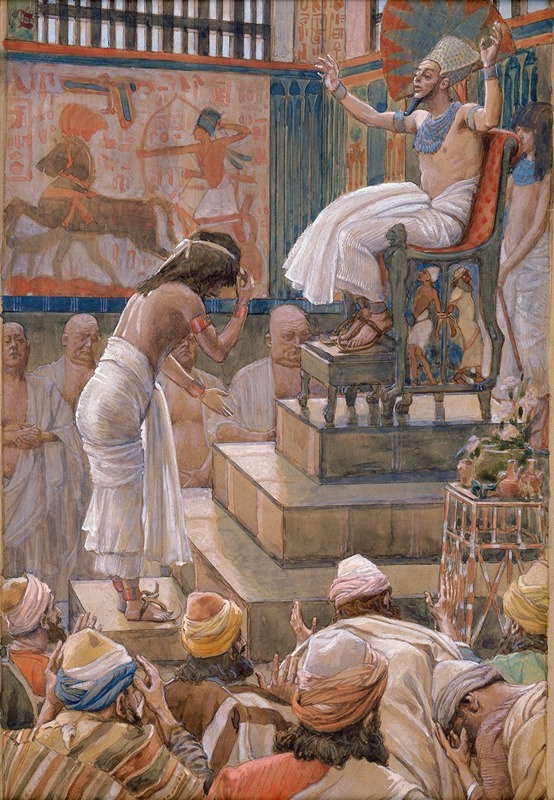
Joseph and His Brethren Welcomed by Pharaoh
A hand-painted replica of James Tissot’s masterpiece Joseph and His Brethren Welcomed by Pharaoh, meticulously crafted by professional artists to capture the true essence of the original. Each piece is created with museum-quality canvas and rare mineral pigments, carefully painted by experienced artists with delicate brushstrokes and rich, layered colors to perfectly recreate the texture of the original artwork. Unlike machine-printed reproductions, this hand-painted version brings the painting to life, infused with the artist’s emotions and skill in every stroke. Whether for personal collection or home decoration, it instantly elevates the artistic atmosphere of any space.
"Joseph and His Brethren Welcomed by Pharaoh" is a painting by the French artist James Tissot, who is renowned for his detailed and vivid biblical illustrations. This particular work is part of Tissot's extensive series of watercolor paintings that depict scenes from the Bible, specifically focusing on the Old Testament narratives. Tissot's biblical series is known for its historical accuracy and attention to detail, reflecting his deep interest in the cultural and historical contexts of the biblical stories.
James Tissot was born in 1836 in Nantes, France, and initially gained fame for his society paintings in Paris and London. However, in the latter part of his career, he experienced a religious awakening that led him to dedicate his artistic talents to illustrating the Bible. Between 1886 and 1894, Tissot traveled to the Middle East to study the landscapes, architecture, and costumes of the region, which greatly influenced his biblical works.
"Joseph and His Brethren Welcomed by Pharaoh" illustrates a scene from the Book of Genesis, specifically Genesis 47:1-12. This passage describes the moment when Joseph, who had risen to a position of power in Egypt, introduces his family to Pharaoh. Joseph's brothers had previously sold him into slavery, but he eventually became the vizier of Egypt, second only to Pharaoh. During a severe famine, Joseph's brothers traveled to Egypt seeking food, and after a series of events, Joseph revealed his identity to them and invited his family to settle in Egypt.
In Tissot's painting, the composition captures the moment of reunion and acceptance. Pharaoh is depicted as a regal figure, welcoming Joseph's family with open arms. The setting is likely inspired by Tissot's observations during his travels, incorporating elements of Egyptian architecture and attire. The figures are rendered with meticulous detail, showcasing Tissot's commitment to authenticity and his ability to convey emotion and narrative through his art.
Tissot's work on biblical themes was well-received during his lifetime and continues to be appreciated for its artistic and historical value. His paintings offer a unique perspective on biblical stories, combining his artistic skill with his dedication to historical research. The series of which "Joseph and His Brethren Welcomed by Pharaoh" is a part was eventually published as "The Life of Our Lord Jesus Christ" and "The Old Testament," which included numerous illustrations that brought these ancient stories to life for contemporary audiences.
Today, Tissot's biblical paintings are housed in various collections, including the Brooklyn Museum in New York, which holds a significant number of his works. These paintings remain a testament to Tissot's legacy as an artist who bridged the gap between art and religious narrative, providing viewers with a visually rich interpretation of biblical history.





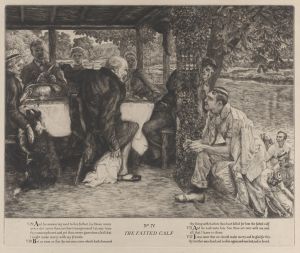
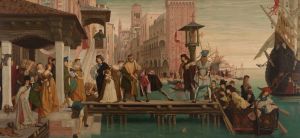

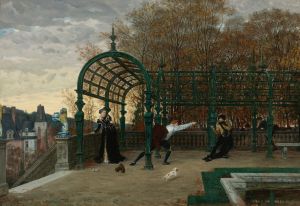




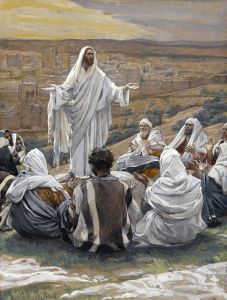
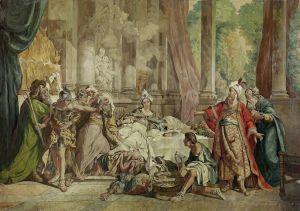
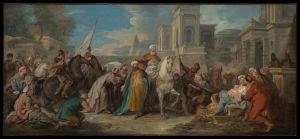
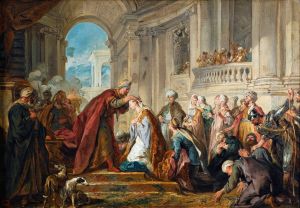
![One of two colossal statues of Rameses [sic] II. Entrance to the Temple at Luxor.](/imgs/217522/s/david-roberts-one-of-two-colossal-statues-of-rameses-sic-ii-entrance-to-the-temple-at-luxor-473c42e1.jpg)